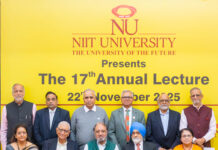The NEET controversy has severely impacted the credibility of the Indian examination system, leading to significant mental stress for students. It is evident that technology must intervene to prevent such issues in the future. Advanced technological solutions are available today that can address these mismanagement issues, yet realistic implementation requires approval from educational boards and the government.
One of the most promising solutions lies in algorithmic generative AI-based technology. This technology can eliminate the concept of set papers altogether. Without set papers, the possibility of question paper leaks vanishes. Students, however, would need to be trained on these new technology solutions, and a shift away from traditional OMR sheets to computer or tablet-based marking systems is necessary.
ALSO READ: Technology intervention crucial for preventing NEET-like controversies
A complete change of the system is required. Instead of a fixed date for millions of students, India could adopt a system like SAT or GMAT. This system would allow students to take tests at their convenience, ensuring a digitalized and randomized process. The focus would shift to evaluating students’ aptitude, attitude, and drive to succeed.
The tests should be designed to be free flowing, meaning questions are generated based on the student’s responses. This approach would prioritize depth of knowledge over breadth. In the professional realm, skills, knowledge, and attitude are necessary. A system that assesses these aspects effectively removes disadvantages for students from small towns or those who cannot afford coaching. All of this is achievable with the right use of technology.
The Need for Technological Solutions in Examination Systems
The NEET controversy highlights a systemic problem in the Indian examination system. Incidents of paper leaks, manipulation, and mismanagement undermine the system’s integrity and put pressure on students. Traditional methods are proving to have errors in maintaining the importance of the examination process. This is where technology steps in as a crucial intervention.
Top Courses in Agriculture
More Courses With Certification
Algorithmic Generative AI-Based Solutions
Generative AI can revolutionize the examination system by eliminating the concept of set papers. AI algorithms can create unique question sets for each student based on predefined guidelines, ensuring no two tests are the same. This approach significantly reduces the risk of question paper leaks and maintains the integrity of the examination process. Additionally, AI can analyse a student’s progress and adapt the difficulty level of questions in real-time, providing a personalized assessment experience.
Furthermore, a flexible system where students can attempt the exam multiple times and choose their best score can significantly reduce their pressure and anxiety. This approach allows students to perform at their best without the fear of a single, high-stakes exam determining their future. Additionally, integrating AI-based career counselling, both online and one-on-one, can guide students in making informed decisions about their courses and career paths. By offering insights into potential career options and aligning them with the student’s interests and abilities, this technology ensures that students are not only well-prepared for their exams but also for their future endeavours.
Training and Implementation
Implementing these technological solutions requires significant training for both students and educators. Transitioning from OMR sheets to digital marking systems involves familiarizing students with the new format and ensuring educators are adept at using these tools. Training programs and workshops can bridge this gap, preparing all stakeholders for a seamless transition.
Policy and Approval
For widespread adoption, these technological solutions need approval from educational boards and the government. Policymakers must recognize the long-term benefits of a technology-driven examination system and work towards its implementation. This includes investing in the necessary infrastructure and ensuring all educational institutions have access to these technologies.
Moving Towards a Digitalized Examination System
The vision for a SAT/GMAT-like system in India is a step towards modernization. Such a system allows flexibility, enabling students to take exams at their convenience. This digitalized and randomized approach reduces the chances of malpractice and ensures a fair evaluation process.
Focus on Aptitude, Attitude, and Skills
The new system would prioritize evaluating students’ aptitude, attitude, and skills. AI-driven platforms can assess these qualities more effectively than traditional methods. Questions can be generated dynamically, based on a student’s previous answers, ensuring a comprehensive assessment of their capabilities.
Inclusivity and Equal Opportunities
One of the significant advantages of this technology-driven approach is inclusivity. Students from tier-3 towns, cities, and underprivileged backgrounds would have a level playing field. The digital platform removes regional biases and ensures equal opportunities for all students, regardless of their socio-economic status.
Conclusion
The NEET controversy underscores the urgent need for a technological overhaul in the Indian examination system. Generative AI and other advanced technologies offer viable solutions to prevent such issues in the future. By adopting a digitalized, flexible, and fair assessment system, we can ensure a more credible and stress-free examination process. A modernized examination system is a beacon of hope, promising a future where every student has an equal opportunity to succeed. Technology, when harnessed correctly, has the power to transform the education sector, ensuring integrity, inclusivity, and excellence.
This year educate yourself and develop your career with EdTech Platform EasyShiksha.com





































































